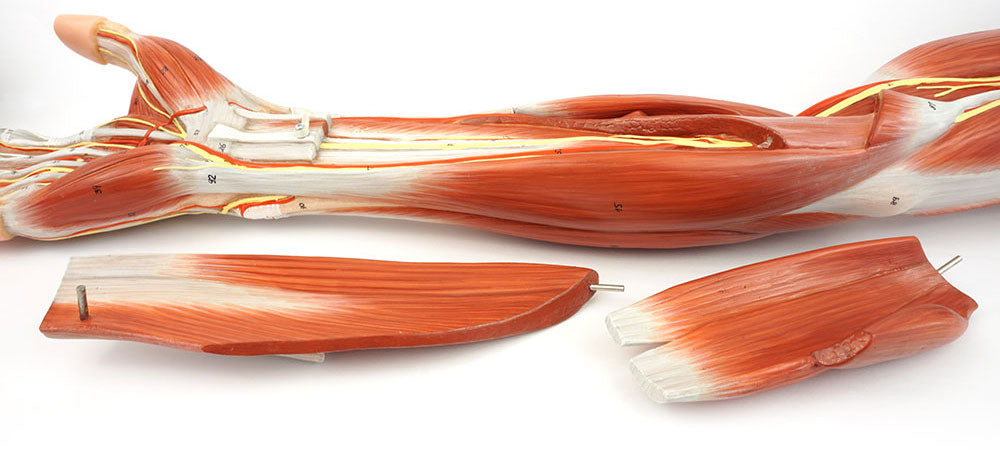Getting back to normal will look different. Programs that have a manual component or require a haptic sense of touch can be difficult to virtualize or taught solely online.
As students come back into classrooms, workshops and labs they may be interacting with anatomy models for learning, hand placement techniques and demonstration purposes. This is a fine way to spread germs and bacteria making disinfecting each model after use a necessary step, but where does that leave your models?
The difficulty is that most commercially available disinfectants are fairly harsh not only on bacteria and viruses but also on hands, plastics and paint. What works on surfaces like doors, desks and other hard porous surfaces can destroy your anatomical models.
The good news that there are products out there that will stop the spread of bacteria and viruses, be safe on your products and preserve your warranty. Let's see what you need:
- Pick a water based product - try to find something aldahyde free and pH neutral
- Sodium Hypochlorite is your friend - harsh on viruses and easy on materials
- Be gentle on silicone and rubberized surfaces - models with functional or rubberized components can deteriorate when cleaned to vigorously and we still recommend soap and water
- Disinfect with a gentle wiping motion - vigorous rubbing shouldn't be needed
To make sure we know what we're talking about we went about researching and testing a disinfectant ourselves on different models, materials and finishes for hours. The result was no damage, no discolouration, no major residue and only minor odor (proper ventilation and mask are always recommended).
We put a liberal amount onto a lint free cloth and wiped the surface of the models. The amount required is minimal so a bottle should last for many applications. Can't find anything suitable locally? We have bottles available for sale with a portion of the proceeds from sale going to the donation of PPE for frontline workers.
